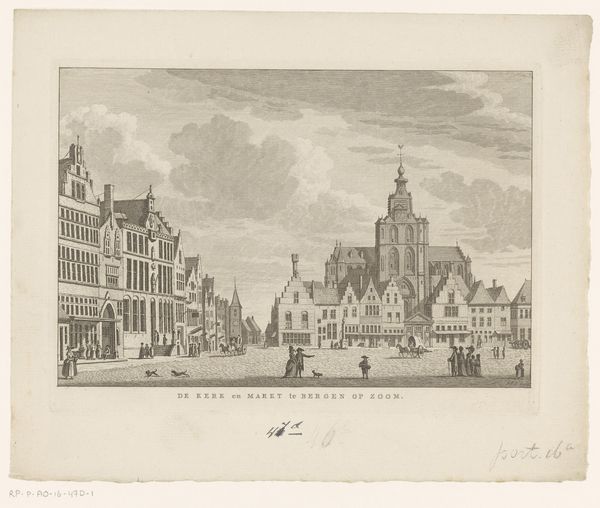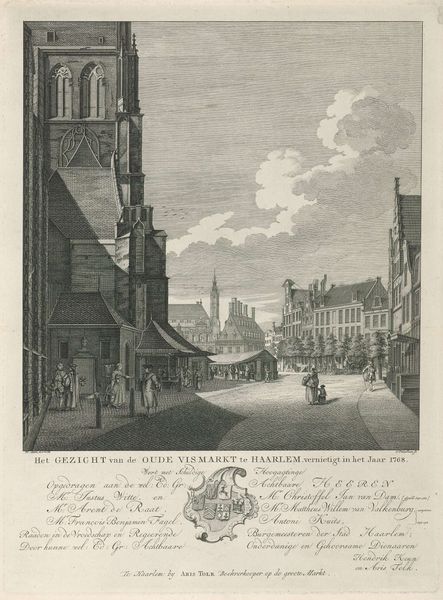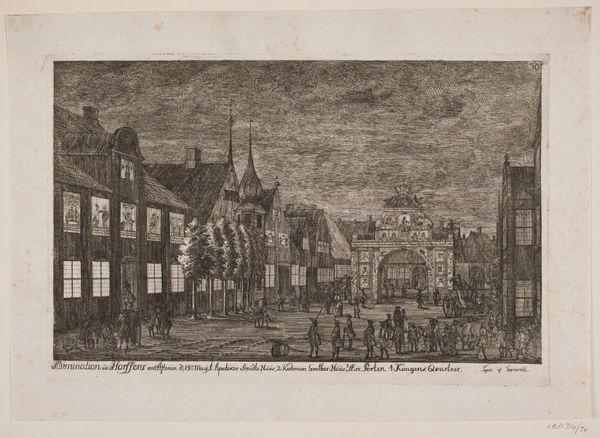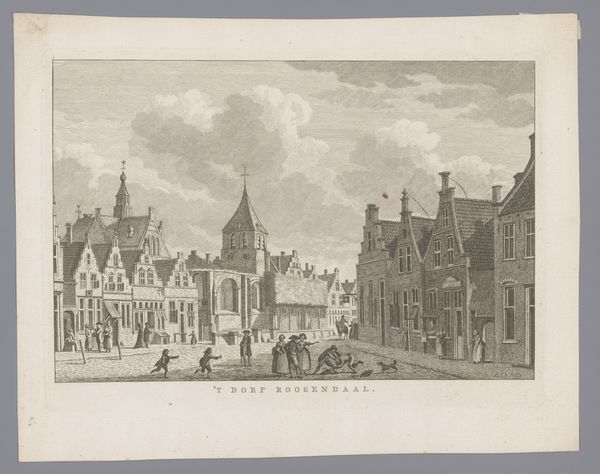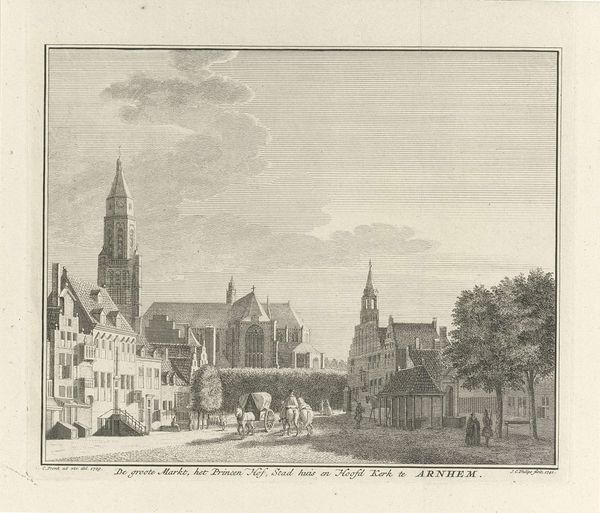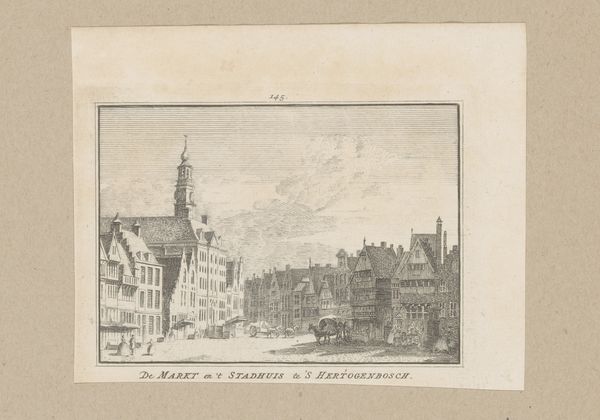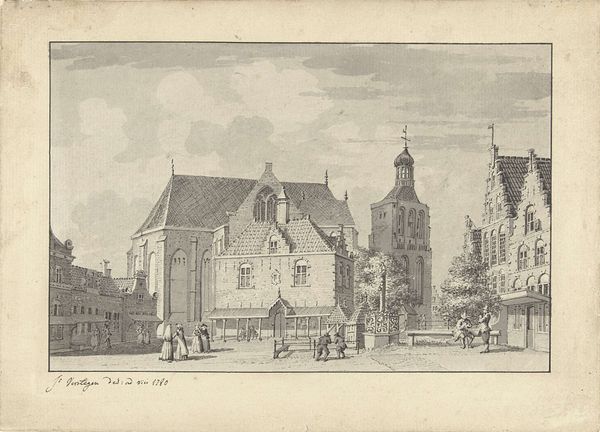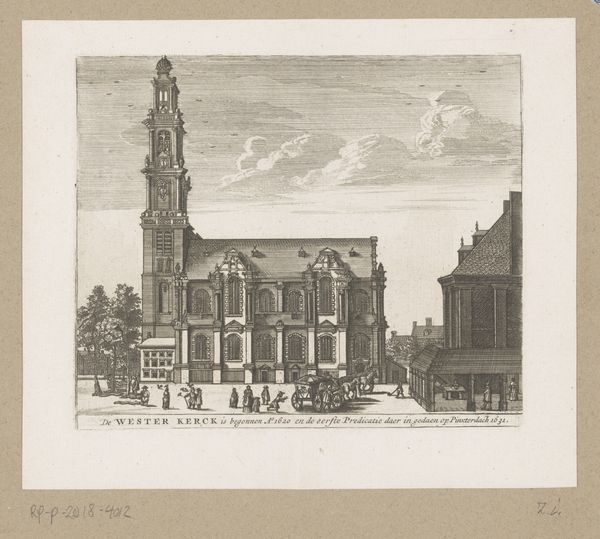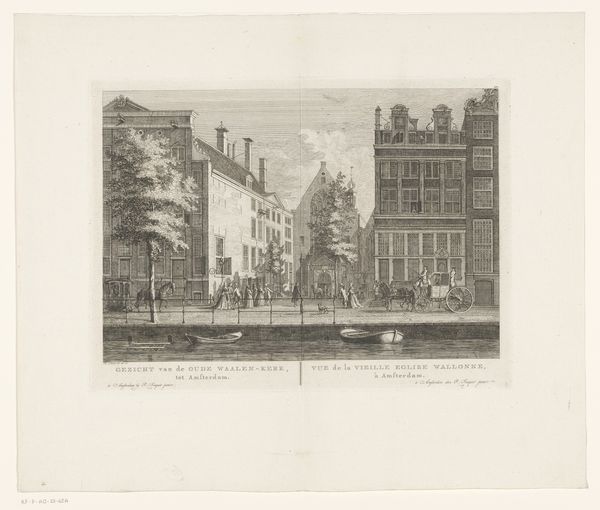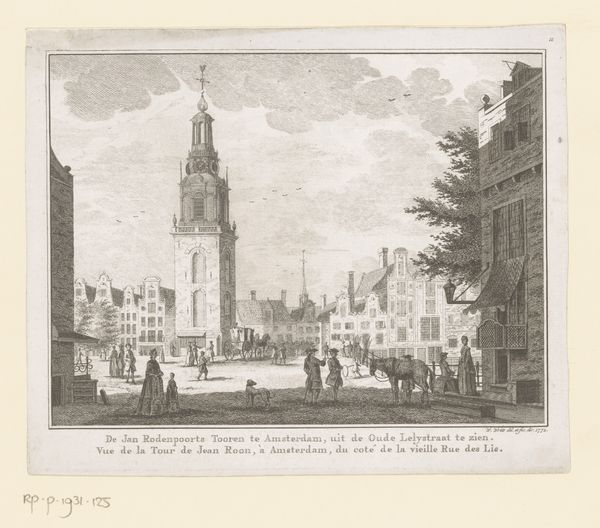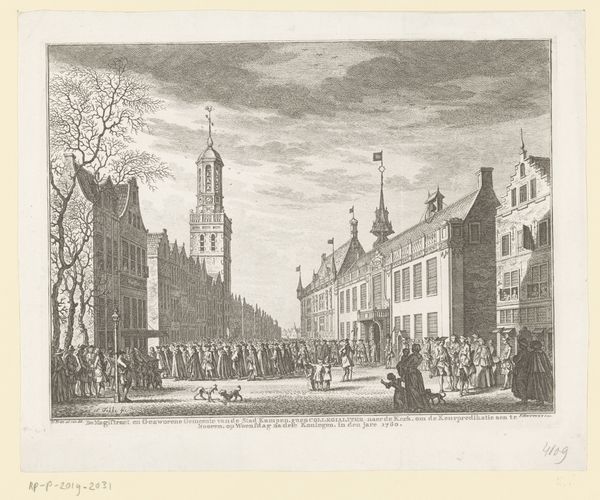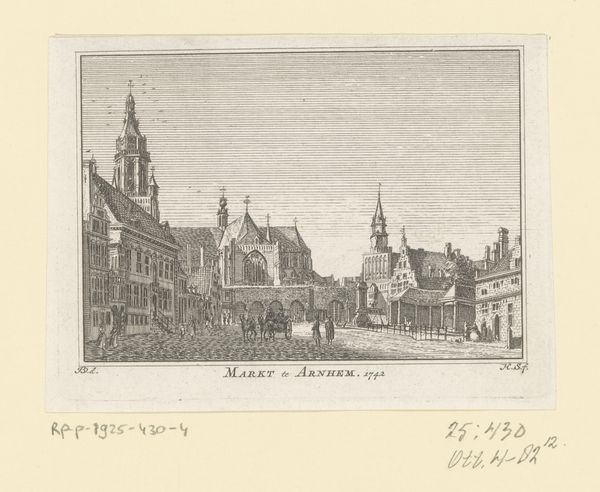
drawing, print, paper, engraving
#
drawing
#
dutch-golden-age
# print
#
paper
#
cityscape
#
genre-painting
#
street
#
engraving
Dimensions: height 75 mm, width 101 mm
Copyright: Rijks Museum: Open Domain
Editor: Here we have Hendrik Spilman's "Gezicht op het stadhuis te Oudewater," an engraving from the late 18th century. It gives a rather idyllic rendering of a Dutch street. What cultural symbols and emotional impressions do you observe? Curator: Well, I'm immediately struck by the orderliness of the scene, wouldn’t you say? The clean lines of the buildings, the carefully placed figures... They evoke a sense of stability and civic pride that's very characteristic of Dutch Golden Age aesthetics continuing into later Dutch art. Do you notice the relative lack of overt religious symbolism? Editor: Now that you point it out, I see it. Coming from other art historical periods, I'm conditioned to seeing some form of obvious religious symbolism! So its absence must say something. Curator: Precisely! It suggests a society where civic identity and secular values were increasingly important. The town hall itself, prominently featured, becomes a symbol of collective governance and communal identity, something people took pride in and still do. This connects to a larger cultural memory of Dutch independence and prosperity, don't you think? It embodies values that resonate across generations. Editor: So, the lack of explicit religious icons paradoxically tells a very strong story? The buildings become stand-ins for more traditional iconography. Curator: Exactly! Think of the symbolism embedded within the architecture: its presence as a structure meant for community building... Can you see it speaking to the importance of social bonds and collective experience? Consider how a seemingly simple cityscape is laden with historical and cultural weight! Editor: This makes me appreciate the engraving even more. I will certainly view these cityscapes through a different lens moving forward.
Comments
No comments
Be the first to comment and join the conversation on the ultimate creative platform.
